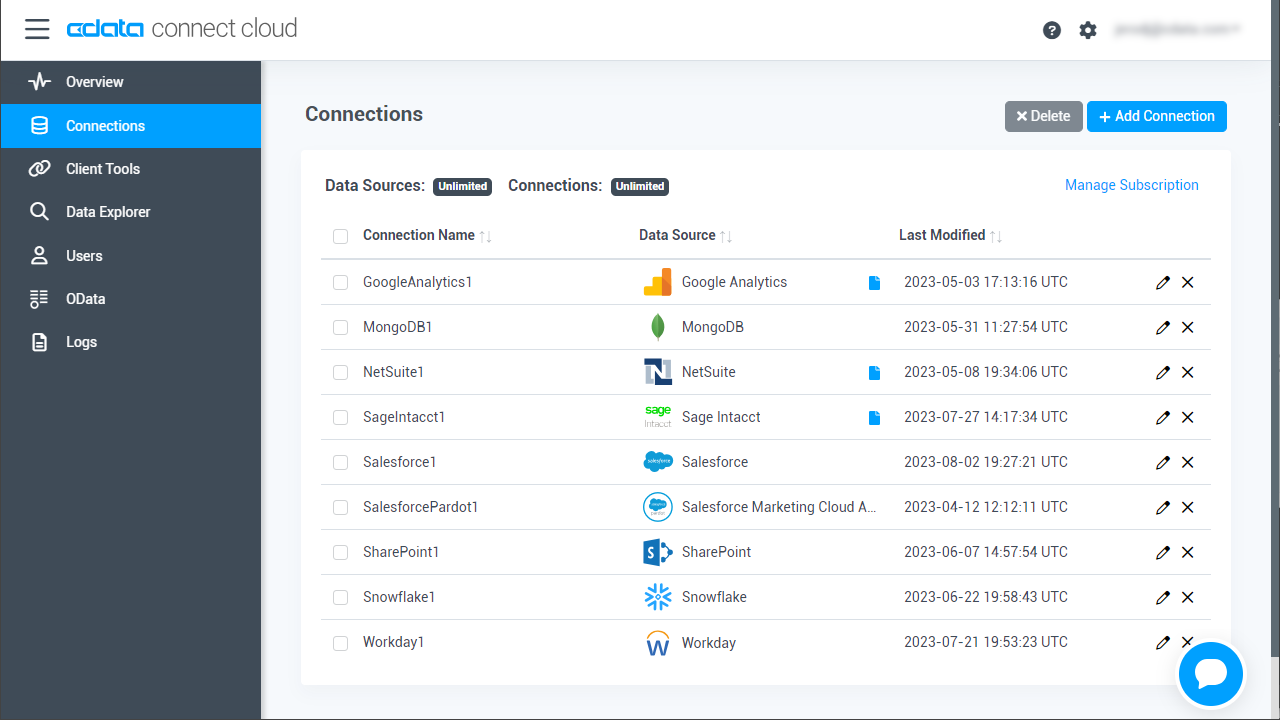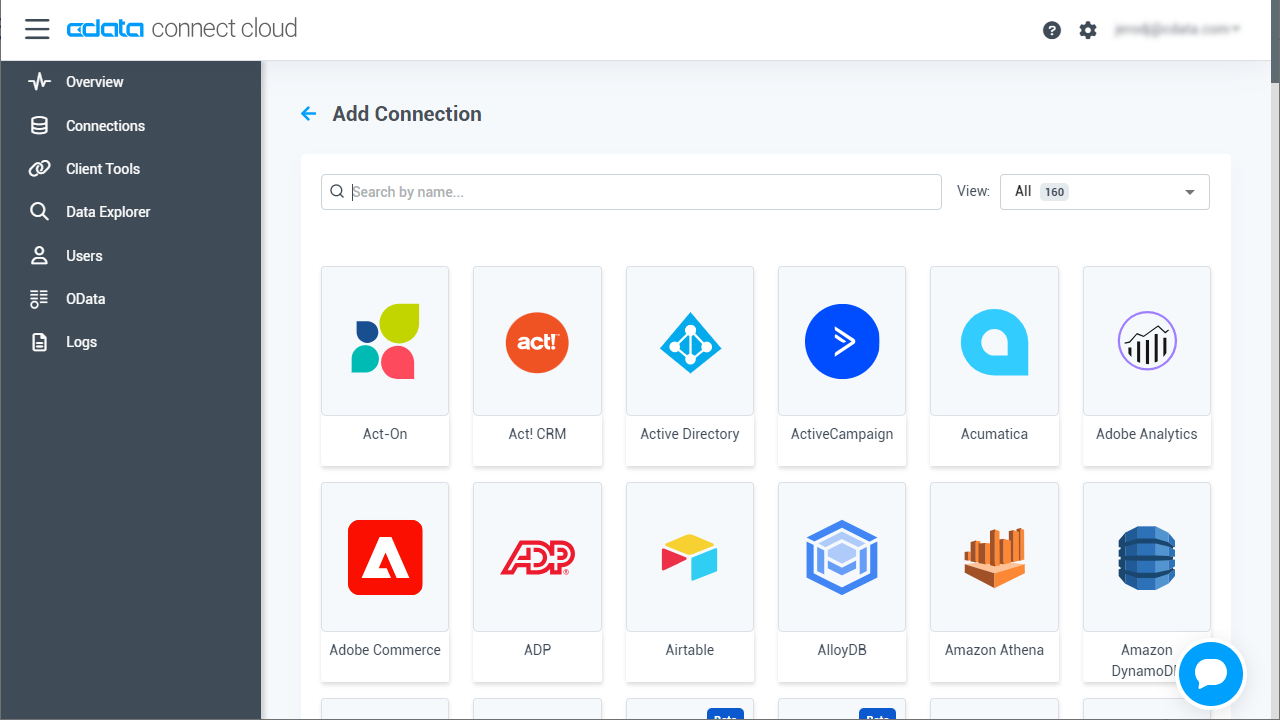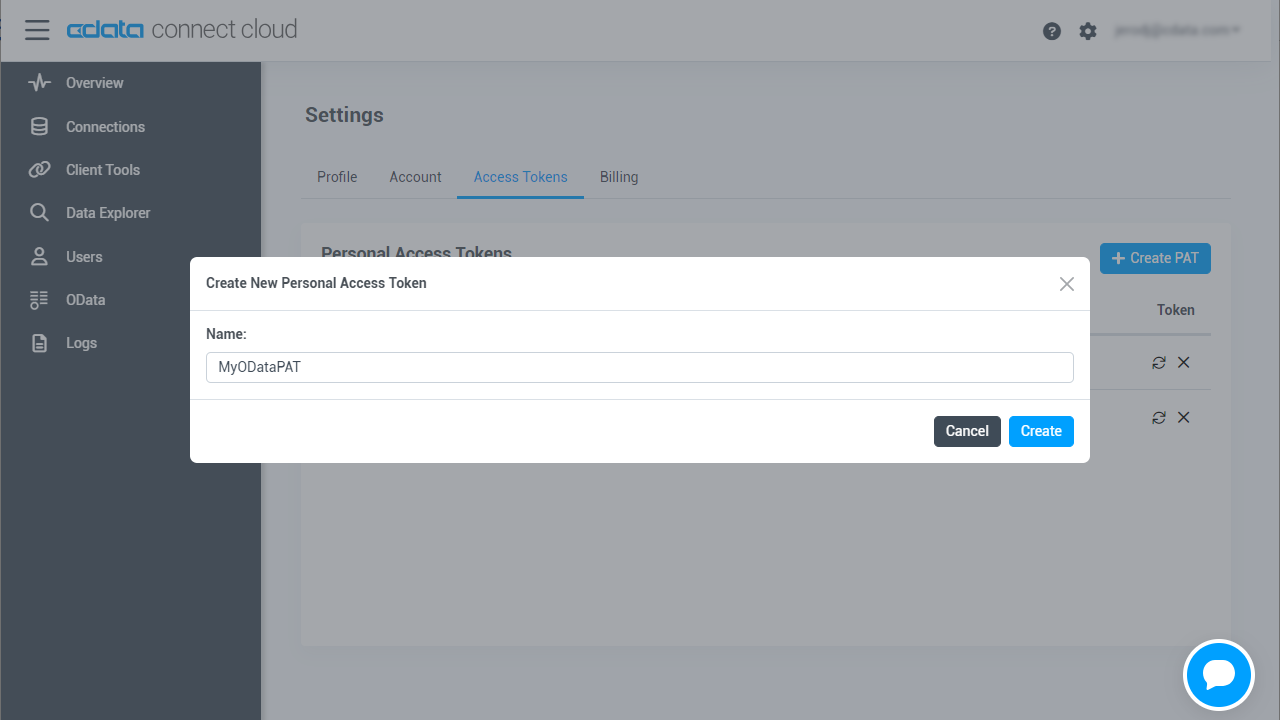Discover how a bimodal integration strategy can address the major data management challenges facing your organization today.
Get the Report →Connect to Live Snowflake Data in PostGresSQL Interface through CData Connect Cloud
Create a live connection to Snowflake in CData Connect Cloud and connect to your Snowflake data from PostgreSQL.
There are a vast number of PostgreSQL clients available on the Internet. PostgreSQL is a popular interface for data access. When you pair PostgreSQL with CData Connect Cloud, you gain database-like access to live Snowflake data from PostgreSQL. In this article, we walk through the process of connecting to Snowflake data in Connect Cloud and establishing a connection between Connect Cloud and PostgreSQL using a TDS foreign data wrapper (FDW).
CData Connect Cloud provides a pure SQL Server interface for Snowflake, allowing you to query data from Snowflake without replicating the data to a natively supported database. Using optimized data processing out of the box, CData Connect Cloud pushes all supported SQL operations (filters, JOINs, etc.) directly to Snowflake, leveraging server-side processing to return the requested Snowflake data quickly.
About Snowflake Data Integration
CData simplifies access and integration of live Snowflake data. Our customers leverage CData connectivity to:
- Reads and write Snowflake data quickly and efficiently.
- Dynamically obtain metadata for the specified Warehouse, Database, and Schema.
- Authenticate in a variety of ways, including OAuth, OKTA, Azure AD, Azure Managed Service Identity, PingFederate, private key, and more.
Many CData users use CData solutions to access Snowflake from their preferred tools and applications, and replicate data from their disparate systems into Snowflake for comprehensive warehousing and analytics.
For more information on integrating Snowflake with CData solutions, refer to our blog: https://www.cdata.com/blog/snowflake-integrations.
Getting Started
Connect to Snowflake in Connect Cloud
CData Connect Cloud uses a straightforward, point-and-click interface to connect to data sources.
- Log into Connect Cloud, click Connections and click Add Connection
- Select "Snowflake" from the Add Connection panel
-
Enter the necessary authentication properties to connect to Snowflake.
To connect to Snowflake:
- Set User and Password to your Snowflake credentials and set the AuthScheme property to PASSWORD or OKTA.
- Set URL to the URL of the Snowflake instance (i.e.: https://myaccount.snowflakecomputing.com).
- Set Warehouse to the Snowflake warehouse.
- (Optional) Set Account to your Snowflake account if your URL does not conform to the format above.
- (Optional) Set Database and Schema to restrict the tables and views exposed.
See the Getting Started guide in the CData driver documentation for more information.
![Configuring a connection (Salesforce is shown) Configuring a connection (Salesforce is shown)]()
- Click Create & Test
-
Navigate to the Permissions tab in the Add Snowflake Connection page and update the User-based permissions.
![Updating permissions Updating permissions]()


Add a Personal Access Token
If you are connecting from a service, application, platform, or framework that does not support OAuth authentication, you can create a Personal Access Token (PAT) to use for authentication. Best practices would dictate that you create a separate PAT for each service, to maintain granularity of access.
- Click on your username at the top right of the Connect Cloud app and click User Profile.
- On the User Profile page, scroll down to the Personal Access Tokens section and click Create PAT.
- Give your PAT a name and click Create.
- The personal access token is only visible at creation, so be sure to copy it and store it securely for future use.

Build the TDS Foreign Data Wrapper
The Foreign Data Wrapper can be installed as an extension to PostgreSQL, without recompiling PostgreSQL. The tds_fdw extension is used as an example (https://github.com/tds-fdw/tds_fdw).
- You can clone and build the git repository via something like the following view source:
sudo apt-get install git git clone https://github.com/tds-fdw/tds_fdw.git cd tds_fdw make USE_PGXS=1 sudo make USE_PGXS=1 installNote: If you have several PostgreSQL versions and you do not want to build for the default one, first locate where the binary for pg_config is, take note of the full path, and then append PG_CONFIG=after USE_PGXS=1 at the make commands. - After you finish the installation, then start the server:
sudo service postgresql start - Then go inside the Postgres database
psql -h localhost -U postgres -d postgresNote: Instead of localhost you can put the IP where your PostgreSQL is hosted.
Connect to Snowflake data as a PostgreSQL Database and query the data!
After you have installed the extension, follow the steps below to start executing queries to Snowflake data:
- Log into your database.
- Load the extension for the database:
CREATE EXTENSION tds_fdw; - Create a server object for Snowflake data:
CREATE SERVER "Snowflake1" FOREIGN DATA WRAPPER tds_fdw OPTIONS (servername'tds.cdata.com', port '14333', database 'Snowflake1'); - Configure user mapping with your email and Personal Access Token from your Connect Cloud account:
CREATE USER MAPPING for postgres SERVER "Snowflake1" OPTIONS (username '[email protected]', password 'your_personal_access_token' ); - Create the local schema:
CREATE SCHEMA "Snowflake1"; - Create a foreign table in your local database:
#Using a table_name definition: CREATE FOREIGN TABLE "Snowflake1".Products ( id varchar, ProductName varchar) SERVER "Snowflake1" OPTIONS(table_name 'Snowflake.Products', row_estimate_method 'showplan_all'); #Or using a schema_name and table_name definition: CREATE FOREIGN TABLE "Snowflake1".Products ( id varchar, ProductName varchar) SERVER "Snowflake1" OPTIONS (schema_name 'Snowflake', table_name 'Products', row_estimate_method 'showplan_all'); #Or using a query definition: CREATE FOREIGN TABLE "Snowflake1".Products ( id varchar, ProductName varchar) SERVER "Snowflake1" OPTIONS (query 'SELECT * FROM Snowflake.Products', row_estimate_method 'showplan_all'); #Or setting a remote column name: CREATE FOREIGN TABLE "Snowflake1".Products ( id varchar, col2 varchar OPTIONS (column_name 'ProductName')) SERVER "Snowflake1" OPTIONS (schema_name 'Snowflake', table_name 'Products', row_estimate_method 'showplan_all'); - You can now execute read/write commands to Snowflake:
SELECT id, ProductName FROM "Snowflake1".Products;
More Information & Free Trial
Now, you have created a simple query from live Snowflake data. For more information on connecting to Snowflake (and more than 100 other data sources), visit the Connect Cloud page. Sign up for a free trial and start working with live Snowflake data in PostgreSQL.







